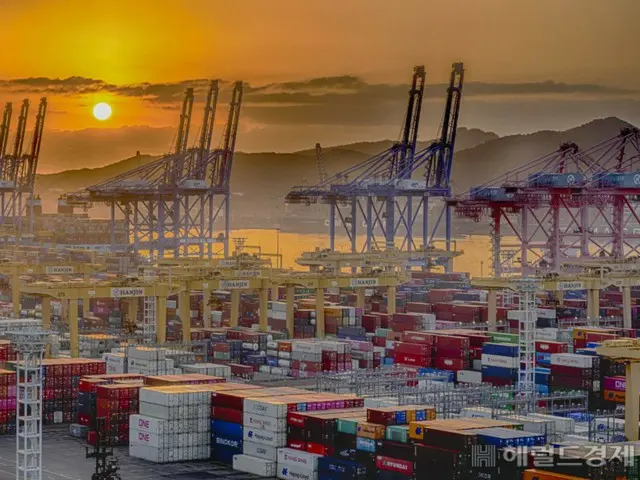It was the first time in 31 years that Japan recorded a trade deficit. This appears to be due to changes in the industrial structure due to changes in the trade environment, such as the US-China conflict and the reorganization of supply chains.
According to the 2023 import and export trends announced by the South Korean Ministry of Trade, Industry and Resources on the 1st, exports to the US in December last year were $11.3 billion.
reached a new record high. As a result, the United States has become South Korea's largest export partner on a monthly basis for the first time in 20 years since June 2003. Exports to China were $10.9 billion, down 2.9% from the same month last year.
did. On an annual basis, in 2023, the gap in export ratio between China (19.7%), the largest export market, and the United States (18.3%), the second largest, has shrunk to 1.4 percentage points, the smallest since 2003.
. Until 2020, the difference between China and the United States was more than 11 percentage points. Thanks to strong exports, South Korea recorded a trade surplus of $44.5 billion with the United States last year. Black vs. ASEAN for the whole last year
($31.2 billion). As a result, the US became South Korea's largest country with a trade surplus last year. The country recorded a trade deficit of $18 billion with China. These changes in trade flows
Analysis shows that it emerged amid structural changes. Changes in the trade environment, including the reorganization of supply chains due to the conflict between the United States and China and major countries' home-centered trade policies, have changed the framework of the industrial structure.
Automobile sales greatly contributed to the expansion of exports to the United States. According to the Korea International Trade Association, the value of automobile exports to the United States from January to November last year was $28.77 billion, an increase of 44.2% from the previous year. electricity self
Cars and sport utility vehicles (SUVs) performed well, as well as the commercial leasing channel, which is exempt from the U.S. Inflation Reduction Act (IRA), which subsidizes North American assembled electric vehicles.
sales expanded. Additionally, the secondary battery industry, which expanded into North America in response to the IRA, began full-scale operations at local factories, and exports of secondary battery materials such as cathode materials increased.
On the other hand, exports to China have been decreasing for seven consecutive quarters since the second quarter of 2022. Delayed economic recovery in China and imports of Korean intermediate goods
Some analyzes say that the amount of trade has decreased, but others point out that China has increased investment to increase its self-sufficiency rate in intermediate goods, and the roles of South Korea and China in the trade market have reversed.
The Korea Institute of Industrial Science in its report ``Economic and Industrial Outlook 2024'' states that ``improving the competitiveness of China's manufacturing industry will increase its intermediate goods self-sufficiency rate, and
It has been confirmed that this will have a negative impact on imports." South Korea's share of China's total imports also decreased from 10.9% in 2015 to 6.3% in 2023.
However, as the secondary battery industry expands, South Korea relies on China for most of its core materials, such as lithium and precursors, and is unable to import large-scale imports from China.
There are an increasing number of products that need to be sold. According to the Korea International Trade Association, the dependence on China for major secondary battery materials such as lithium hydroxide, nickel sulfate, cobalt sulfate, and precursors in the first half of last year was 82% each.
It reached .3%, 72.1%, 100%, and 97.4%. The amount of lithium hydroxide that South Korea purchased from China from January to November last year alone was estimated at $4.6 billion.
As the domestic electric vehicle market expands, imports of price-competitive Chinese-made electric vehicle batteries have also increased. Imports from January to November last year
With a value of $5.9 billion, it ranks first among China's imported items. Last year, South Korea spent more than $10 billion on just two items, batteries and lithium hydroxide, or about 13 trillion Korean won (approximately 1,414.3 billion yen).
) had a trade deficit. As a result, there are voices saying that in order to respond to the changing trade situation, it is necessary to diversify from large-scale exports centered on intermediate goods, and to make efforts to develop technology and cultivate markets.
. ``China remains an important export market,'' the Korea International Trade Association said in a report, adding, ``We need to diversify the risks of changes in the external environment through export market diversification.''
2024/01/02 06:17 KST
Copyrights(C) Herald wowkorea.jp 104

